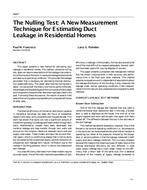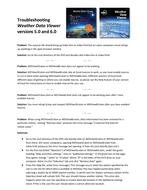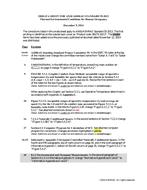A particularly suspect aspect for building simulations has been the ability to predict ground heat transfer. In Florida, slabon-grade construction dominates. To better understand ground heat transfer, as well as the differences between uncovered slaband applying an insulation layer (carpeting) over a slab in a mild climate, the Florida Solar Energy Center built two identicalresidential laboratory buildings with 164 embedded slab and ground thermocouples. In July 2014, an experiment began comparingthe thermal performance of carpet to uncovered slab flooring. The buildings were cooled to 77°F (25°C) in summer and heatedto 73°F (22.8°C) in winter. The thermostats were set to either cooling or heating, as during Florida’s winters interior temperaturessometimes drift above the cooling set point and occasionally when set to cooling they drift below the winter set point. Each laboratoryhome is unoccupied with automated internal sensible and moisture loads provided hourly to represent human, appliance,and lighting loads. The hypothesis is that in Central Florida, where year-round ground temperatures are between winter andsummer set points, the non-carpeted slab should have an advantage.
The paper presents findings for a year’s worth of data collection, differences in heating and cooling loads on each home,and images of temperature differences through the matrix of slab measurements. Net heat transfer in Central Florida was smallduring the cooling season. There was some benefit available during early spring time. Results are sensitive to geographic locationand interior set points.
Citation: Thermal Performance of Exterior Envelopes of Whole Buildings XIII, Conference Papers
Product Details
- Published:
- 2016
- Number of Pages:
- 8
- Units of Measure:
- Dual
- File Size:
- 1 file , 1.2 MB
- Product Code(s):
- D-BldgConf16-34


